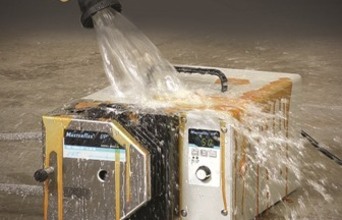
"The wide variety of the pump's tubing formulations includes chemically compatible tubing that meets EP, USP, FDA, 3A and NSF approvals. Replacing the tubing is very easy and quick, simplifying clean-down processes and avoiding cross contamination," explains Colin Heathfield, Cole-Parmer Technical Sales Manager and fluid handling specialist.
The drives are available in analogue, digital, or command protocol control options, enabling easy integration into HEL's ELS control software. Each HEL application requires a customised approach, as well as good understanding of the customer's requirements. In this case, after discussing the options with a Cole-Parmer technical expert, HEL selected a precision standard pump system with a pump head ideally suited for metering, feed, and transfer applications together with the bio tubing.
"We rely on Cole-Parmer's knowledge of pumping technologies and liquid measurement to complement our automated reactor system expertise. I can be sure that the right solution will be specified for my client's application," comments Dr Jasbir Singh, Managing Director, HEL. "This is particularly important to us because most of our customers require a degree of customisation and we need to be able to respond with appropriate and cost-effective solutions.
Lab applications
A research laboratory needs to pump dilute sulphuric acid and a copper sulphate solution 24 hours a day for five days in a row. Technicians need to re-circulate these two chemicals at 60ºC for a cell lab. Plus, they need to be able to vary the flow rate with a maximum flow of 15 LPM at 15 psi.
Initially, a flexible impeller pump might make sense for its durability, material handling flexibility, and positive displacement features. Yet the flexible impeller pump can't handle higher pressures at higher flow rates well. Variable flow control is difficult, as is finding chemically compatible internal pump parts. The pump is hard to clean and it cannot run dry.
When compared to a peristaltic pump, the flexible impeller pump is less favourable. The peristaltic pump handles higher pressures at higher flow rates. Variable-speed pump drives make it easy to control flow. Once again, chemically compatible tubing is available, and the pump can run dry.



































